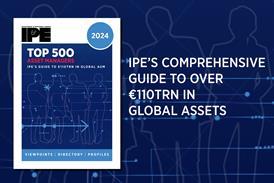Accounting Matters: Will IFRS 9 cause a new crisis?
The global financial crisis of 2008-09 was fertile ground for the International Accounting Standards Board (IASB) and the US Financial Accounting Standards Board (FASB). Suddenly everyone was talking about flawed accounting. Globalisation was king, bigger was better, and politicians were keen to assuage public anger that banks which seemed were healthy were in fact insolvent.
This content is only available to IPE Members
Already an IPE Member? Sign in here
Unlock your IPE Membership Package
For unlimited access to IPE’s industry-leading market intelligence, comprising news, data and long-form content on European pensions and institutional investment.
What type of organisation do you work for?
- Secure online payment
- Free European delivery
- Best value for price
IPE Membership
IPE has created a suite of products and services for Europe’s institutional investment and pensions community.
Premium content
Pension fund interviews,
country analysis and data
country analysis and data
Opinion and analysis
Asset classes
and strategies in depth
and strategies in depth







